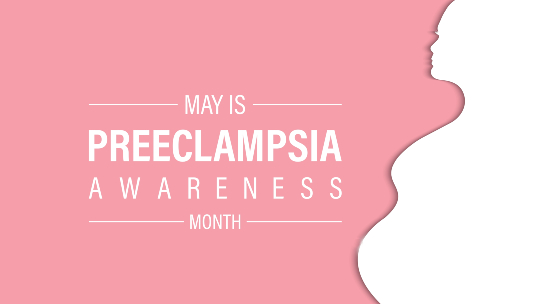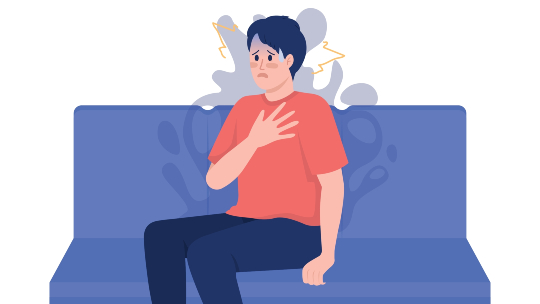There’s a lot of local pride when it comes to surfing. Polynesians invented the sport and Native Hawaiians pioneered hee nalu, the art of standing on a surfboard. Men and women of all ages and abilities rode waves throughout the 1800s. But it soon became a male-dominated sport – something Mindy Pennybacker noticed when she first started surfing in the 1960s.
“I was the first girl in this gang of boys who adopted me,” says Pennybacker, who grew up surfing the Diamond Head breaks. “They knew how badly I wanted to learn.”
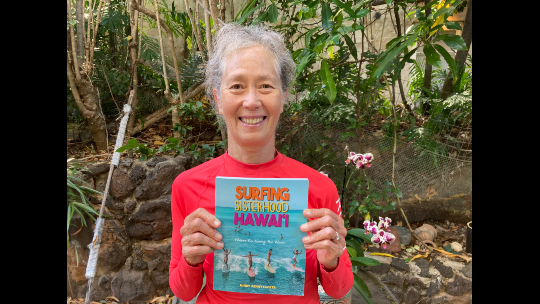
Mindy Pennybacker with her book. Photo courtesy Don Wallace
Pennybacker documented her surfing journey and the stories of 30 other female surfers in Surfing Sisterhood Hawaii: Wahine Reclaiming the Waves. While the boys of the Tongg’s Gang helped coach her as a young surfer, Pennybacker’s experience in the ocean hasn’t been a smooth ride.
Navigating the lineup
Surfing is a unique sport – you’re connecting with nature and at its mercy. No two waves are the same, so surfers must understand a variety of techniques, be able to read the situation, and make split-second decisions. There’s also surf etiquette to follow while waiting for your turn in the lineup:
- Surfers closest to the peak have the right-of-way.
- Don’t paddle around another surfer to gain priority.
- Never drop in on someone else’s wave.

Man drops in in front of woman at Ala Moana Bowls. Photo courtesy Craig T. Kojima/Honolulu Star-Advertiser
“The lineup can be intense,” says Pennybacker. “There are only a couple of places in every lineup where you have the ideal place to paddle for a wave. All the energy is condensed in this tight area and you’re often face-to-face with strangers.”
While Pennybacker is a skilled surfer, she spent more than two dozen years on the Mainland and away from the ocean. So when she moved back home to Oahu, she was a little rusty in the water.
“I was trying to regain my footing as a surfer,” says Pennybacker. “But there’s a lot of sexism in the lineup. Men sometimes push us off waves, insult us, and tell us they’ll decide if we deserve a wave. At first, I would ignore them, but then I realized women should speak up.”

Excerpt from Surfing Sisterhood Hawaii. Photo courtesy Mindy Pennybacker
Pennybacker wrote about these encounters in her column for the Honolulu Star-Advertiser. The response was overwhelming, with many female surfers sharing similar stories. That’s how the idea for Surfing Sisterhood Hawaii began.
Dealing with aggression
Pennybacker spoke with surfers as young as 11, mothers juggling busy schedules, and other women who make up the community.
“I discovered how many other women experienced the same things as me,” says Pennybacker. “But we’re still surfing whenever we can; we’re powering on. You just never know when sexism will rear its ugly head.”
Professional athletes aren’t immune to aggression in the lineup. Hawaiian surfer Carissa Moore has established herself as a surf icon. She won five world titles and the first-ever Olympic gold medal for surfing. She’s had one of the most impressive surfing careers the world has seen, but still faces struggles when surfing recreationally.

Carissa Moore free surfs at Kewalo Basin. Photo courtesy Bruce Asato/Honolulu Star-Advertiser
“Carissa told me the same thing: ‘It can be intimidating to surf. Men are more muscular, they’re bigger, they paddle faster,’” says Pennybacker. “She was often the only woman in the lineup.”
But women aren’t letting these challenges stop them. Whether they’re paddling out to the lineup or riding a wave, they find joy and peace in the sport as they connect with nature.
“It’s a fun, free, whole-body workout that builds confidence,” Pennybacker says.
Freedom of the ocean
To understand gender inequality in surfing today, Pennybacker takes readers back to ancient times through the 19th century, when men and women were equals in the water. They both competed and surfed big, hollow waves.

Excerpt from Surfing Sisterhood Hawaii. Photo courtesy Mindy Pennybacker
But when western missionaries arrived in Hawaii, they tried to ban surfing and other cultural practices. When the sport saw a resurgence in the 20th century, capitalism crept in and surfing was commodified. Men soon became the face of surfing in books, movies, and the surfing lifestyle trend.
“Women couldn’t get sponsors; men were in all the advertisements,” says Pennybacker. “Out on the water, only men could compete at Banzai Pipeline, Waimea Bay, or Sunset Beach because organizers said it was too dangerous for women.
“But people forget history so easily. Some of the women I profiled in the book went to Pipeline in the 1980s and ‘90s and went over the falls until they got barreled.”
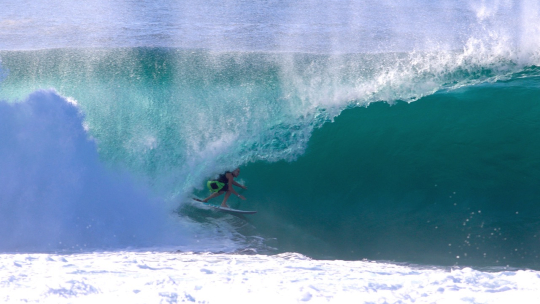
Keala Kennedy gets barreled at Banzai Pipeline. Photo courtesy Betty Depolito
After decades of being shut out from some of the most challenging and dangerous waves, women were finally allowed to compete at Pipeline in 2020. And last year, women competed alongside the men in the Eddie Aikau Big Wave Invitational at Waimea Bay.
Celebrating surfing sisters
Women are making strides in ensuring the ocean is an even playing field. In 2019, under pressure from women surfers, the World Surf League began awarding equal prize money to men and women. A year later, the Honolulu City Council passed a surf equity bill, adding gender equity as a criterion for surf meets at Oahu beach parks.
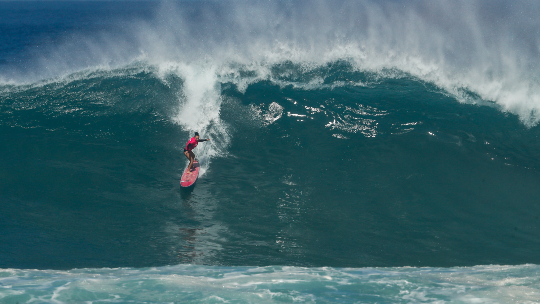
Makani Adric competes in the Eddie Aikau at Waimea Bay. Photo courtesy Jamm Aquino/Honolulu Star-Advertiser
Over the years, Pennybacker has also seen a growing community of empowered girls and women who aren’t afraid to assert themselves in the lineup – something she hopes will continue.
“To face the surfing world, you have to have the strength to go out there,” says Pennybacker. “You need confidence in yourself, a great desire to surf, and the belief that you can reach what you want. And there’s no better feeling of triumph when you ride a wave.”
Surfing adventures
Read more about the joy of surfing and riding a wave:
surfing in the moonlight
surf lessons
surfing safety with waikiki beach boys
surfing through life
tandem surfing on display at duke’s oceanfest
Love local literature? Be sure to check out hawaiian legends, adventure, and the rainforest in the spring 2024 issue of Island Scene.


